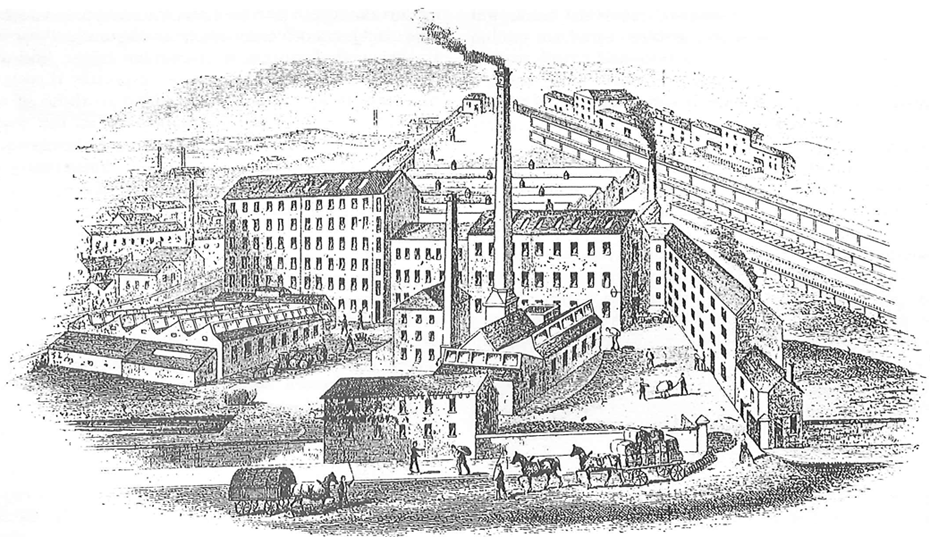Built in late 1820s and early 1830s as steam-powered woollen mill by the Ellis family. Early buildings included a timber-floored mill (three and a half storeys, seven bays), probably for scribbling, carding and fulling; cloth dryhouse of two storeys; dyehouse; and, by 1832, an L-shaped four-storeyed loomshop. Site expanded with addition of new timber-floored mills in 1838-40 (three and a half storeys, ten bays) and 1845 (six storeys, twelve bays, by James Radcliffe, Huddersfield), the latter and possibly the former signifying introduction of powered spinning, of a new dyehouse, and by 1855 of a weaving shed for powerlooms. Subsequent development principally involved the construction of large new weaving sheds.
Batley Carr Mills (Joshua Ellis & Co. Ltd) is a site on this building and its change of use from industrial to residential in 2007.
